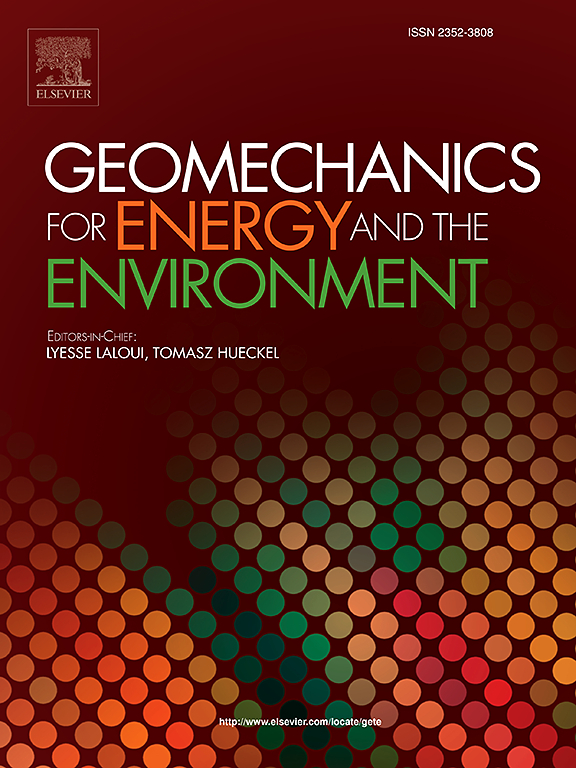Analysis of thermally-induced fracture of Callovo-Oxfordian claystone: From lab tests to field scale
Abstract
Argillaceous rocks are a suitable host rock for the deep geological disposal of exothermic High-Level Radioactive Waste (HLW) and Spent Fuel (SF). Excess pore pressures develop in this type of rocks when subject to increased temperatures that, in some circumstances, may lead to the fracturing of the rock. The paper explores this phenomenon by means of coupled numerical analyses carried out within a fully coupled thermo-hydro-mechanical (THM) framework. The general THM formulation is described as well as the anisotropic elastic and anisotropic elastoviscoplastic constitutive laws employed. Thermal extension triaxial tests are simulated as a check on the performance of the numerical formulation and to provide calibration data for the tensile strength of the material. Selected results from a comprehensive set of three-dimensional analyses of a large-scale field heating test, designed to study the possibility of thermal-induced failure in the rock, are presented and discussed. The analyses reproduce satisfactorily the observed patterns of behaviour. The effects of the constitutive law, material parameters and the presence of the excavation damage zone (EDZ) around the main drift and around the heater boreholes are studied. In particular, their effects on the state of the stress in the heated area are examined in the context of the potential for thermal fracturing of the rock.

 求助内容:
求助内容: 应助结果提醒方式:
应助结果提醒方式:


